King Cobra
- December 15, 2023
- 0 comment
The King Cobra, scientifically known as Ophiophagus hannah, stands as one of the most majestic and fearsome reptiles in the snake kingdom. Renowned for its impressive size, distinctive hood, and potent venom, this species is native to the dense forests and plains of Southeast Asia. The King Cobra earns its regal title due to its ability to reach lengths of up to 18 feet, making it the longest venomous snake in the world.

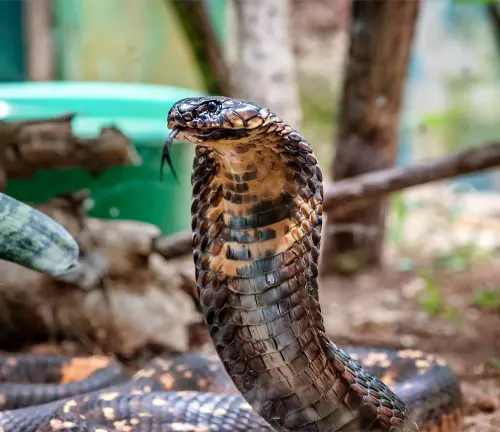
Characterized by its olive-green scales, contrasting black and white bands, and a hood that expands when threatened, the snake exudes an aura of both beauty and danger. Despite its intimidating appearance, the King Cobra is generally elusive and prefers to avoid confrontation. However, when provoked, it can unleash a potent neurotoxic venom that can quickly incapacitate its prey or potential threats.
Highly intelligent, these snakes are known for their advanced sensory perception and are capable of accurately tracking their prey, often feeding on other snakes. Conservation efforts are crucial for preserving the King Cobra’s habitat and ensuring the coexistence of this magnificent serpent with its ecosystem.
| Attribute | Details |
|---|---|
| Scientific Name | Ophiophagus hannah |
| Length | Up to 18 feet (5.5 meters) |
| Color | Olive-green with distinctive black and white bands |
| Hood | Yes, expands when threatened |
| Venom | Highly potent neurotoxic venom |
| Native Habitat | Dense forests and plains of Southeast Asia |
| Geographic Range | Southeast Asia, including India, China, and Indonesia |
| Diet | Carnivorous, primarily feeds on other snakes |
| Behaviour | Generally elusive, but can be aggressive when threatened |
| Conservation Status | Vulnerable (IUCN Red List) |
| Notable Features | Longest venomous snake, intelligent and perceptive |
| Threats | Habitat loss, human-wildlife conflict |
Botanical Beauty of “King Cobra”
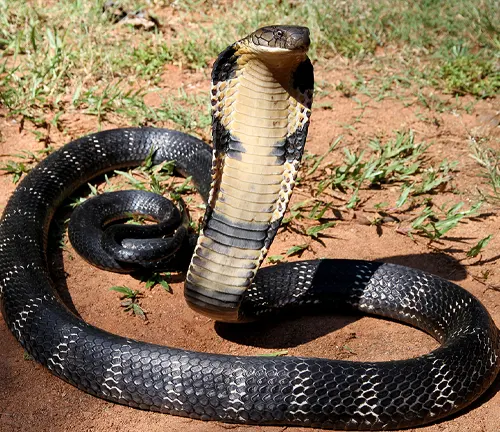
The King Cobra, scientifically known as Ophiophagus hannah, commands attention not only for its intimidating size and venomous capabilities but also for its striking botanical beauty. Cloaked in olive-green scales adorned with distinctive black and white bands, this serpent moves with an elegant grace through the dense forests and plains of Southeast Asia. Its hood, which expands dramatically when threatened, adds a touch of regality to its appearance, earning the species its fitting moniker.
Venomous or Not Venomous?
A subject of fascination and fear, the King Cobra is undoubtedly venomous, possessing a potent neurotoxic venom that swiftly incapacitates its prey. Despite its intimidating reputation, the snake prefers to avoid conflict, highlighting its elusive nature. Understanding the nuances of its venomous capabilities contributes to a more informed perspective on this majestic species.
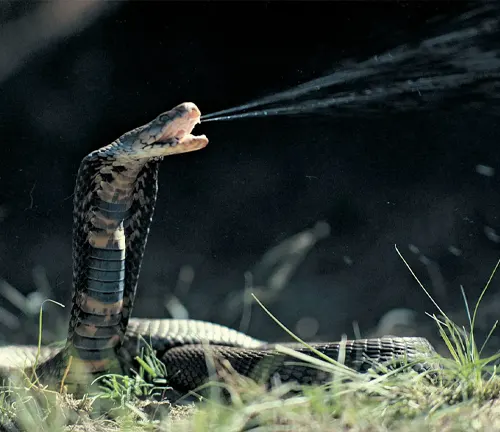
Ecological Importance
Beyond its awe-inspiring presence, the King Cobra plays a vital role in maintaining ecological balance. As a top predator, it helps control populations of other snake species, contributing to the delicate web of life in Southeast Asian ecosystems. Its presence, though often feared, is a testament to the intricate interdependence of species in the natural world.
Habitat and Behaviour

The King Cobra’s habitat mirrors its mystique, with a preference for the dense and varied landscapes of Southeast Asia. From the humid rain forests to the open plains, this snake adapts to a range of environments. Its behaviour, marked by intelligence and advanced sensory perception, showcases a creature finely tuned to its surroundings, emphasising the importance of preserving its natural habitats.
Art And Culture
Entwined with the mysticism of Southeast Asian cultures, the King Cobra finds its place in art and folklore. Revered and feared, the serpent often symbolizes both danger and protection in various traditions. Its presence in cultural narratives reflects the profound impact this awe-inspiring creature has had on human imagination throughout history.
Survival
Survival in the wild is a constant challenge for the King Cobra. From evading predators to securing prey, the snake’s survival instincts are finely tuned. Understanding the strategies it employs for survival sheds light on the resilience of this species in the face of environmental challenges and changing landscapes.
Conservation
As habitats dwindle and human-wildlife conflicts intensify, the King Cobra faces threats to its existence. Conservation efforts are paramount to ensuring the survival of this species. Preserving its natural habitats, mitigating conflicts, and raising awareness about the importance of these majestic creatures contribute to safeguarding the King Cobra for generations to come.
Common Food
The King Cobra’s menu is dominated by other snakes, showcasing its role as a formidable predator. Feeding on a variety of snake species, it helps regulate snake populations in its ecosystem. Understanding its dietary habits provides insights into the intricate relationships between species in the wild.

Benefits
Beyond its ecological contributions, the King Cobra holds potential benefits for medical research. Studying its venom may lead to the development of antivenom and could unlock new insights into treating various medical conditions. Unravelling the secrets of the King Cobra’s venom may not only save lives but also deepen our understanding of the intricate world of snake biochemistry.
Different Species
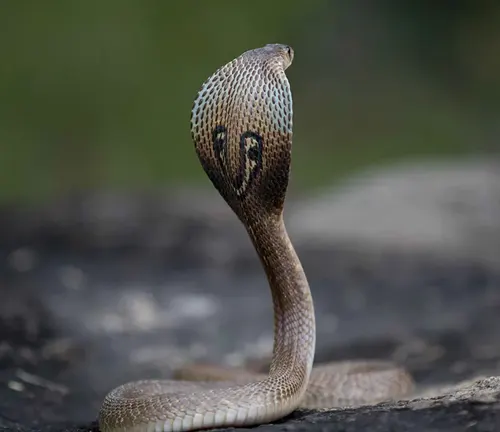
The King Cobra (Ophiophagus hannah) is found in parts of Southeast Asia, including India, southern China, and the Malay Peninsula. While there may be slight variations in coloration and size among individuals in different regions, they are all classified as the same species.
Frequently Asked Questions (FAQs)
1. What is a King Cobra?
The King Cobra (Ophiophagus hannah) is a highly venomous snake found in Southeast Asia. It is the longest venomous snake and is known for its distinctive appearance, including a hood that expands when threatened.
2. Where is the King Cobra found?
The King Cobra is native to the dense forests and plains of Southeast Asia, including India, southern China, and the Malay Peninsula.
3. How long can a King Cobra grow?
King Cobras can reach lengths of up to 18 feet (5.5 meters), making them the longest venomous snakes in the world.
4. Is the King Cobra venomous?
Yes, the King Cobra is highly venomous. It possesses a potent neurotoxic venom that can quickly incapacitate its prey.
5. What does the King Cobra eat?
The primary diet of the King Cobra consists of other snakes. It is a skilled snake hunter and feeds on a variety of snake species.
6. How does the King Cobra behave in the wild?
The King Cobra is generally elusive and prefers to avoid confrontation. It is known for its advanced sensory perception and intelligence. When threatened, it can raise its hood and deliver a potent bite.
7. What is the cultural significance of the King Cobra?
The King Cobra holds cultural significance in various Southeast Asian traditions. It is often revered and feared, symbolizing both danger and protection in folklore and art.
8. Is the King Cobra endangered?
The King Cobra is listed as “Vulnerable” on the International Union for Conservation of Nature (IUCN) Red List. Its populations are threatened by habitat loss and human-wildlife conflicts.
9. Can the King Cobra be kept as a pet?
Keeping a King Cobra as a pet is not recommended due to its venomous nature and specific habitat requirements. In many places, it may also be illegal to keep such a dangerous species.
10. Are there different species of King Cobras?
No, the term “King Cobra” typically refers to a single species, Ophiophagus hannah. While there may be regional variations, they are all considered the same species.




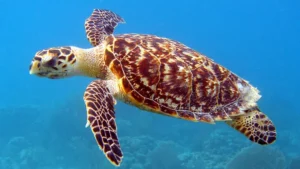

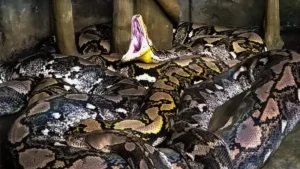

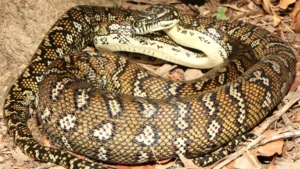

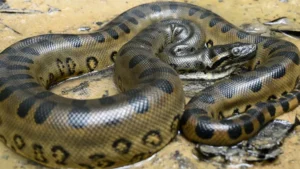
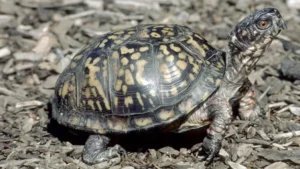
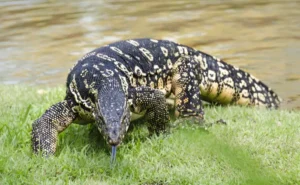

Leave your comment